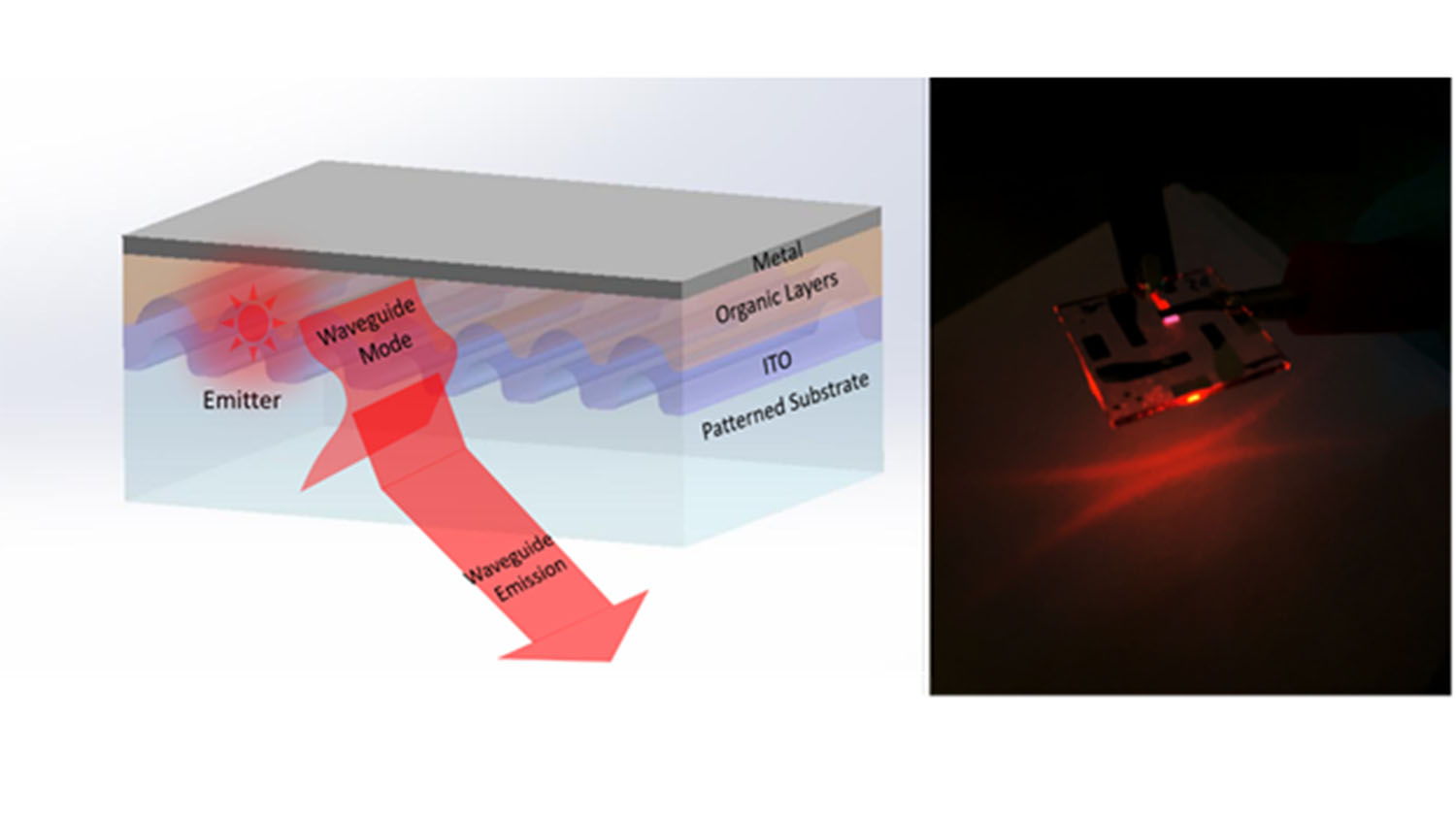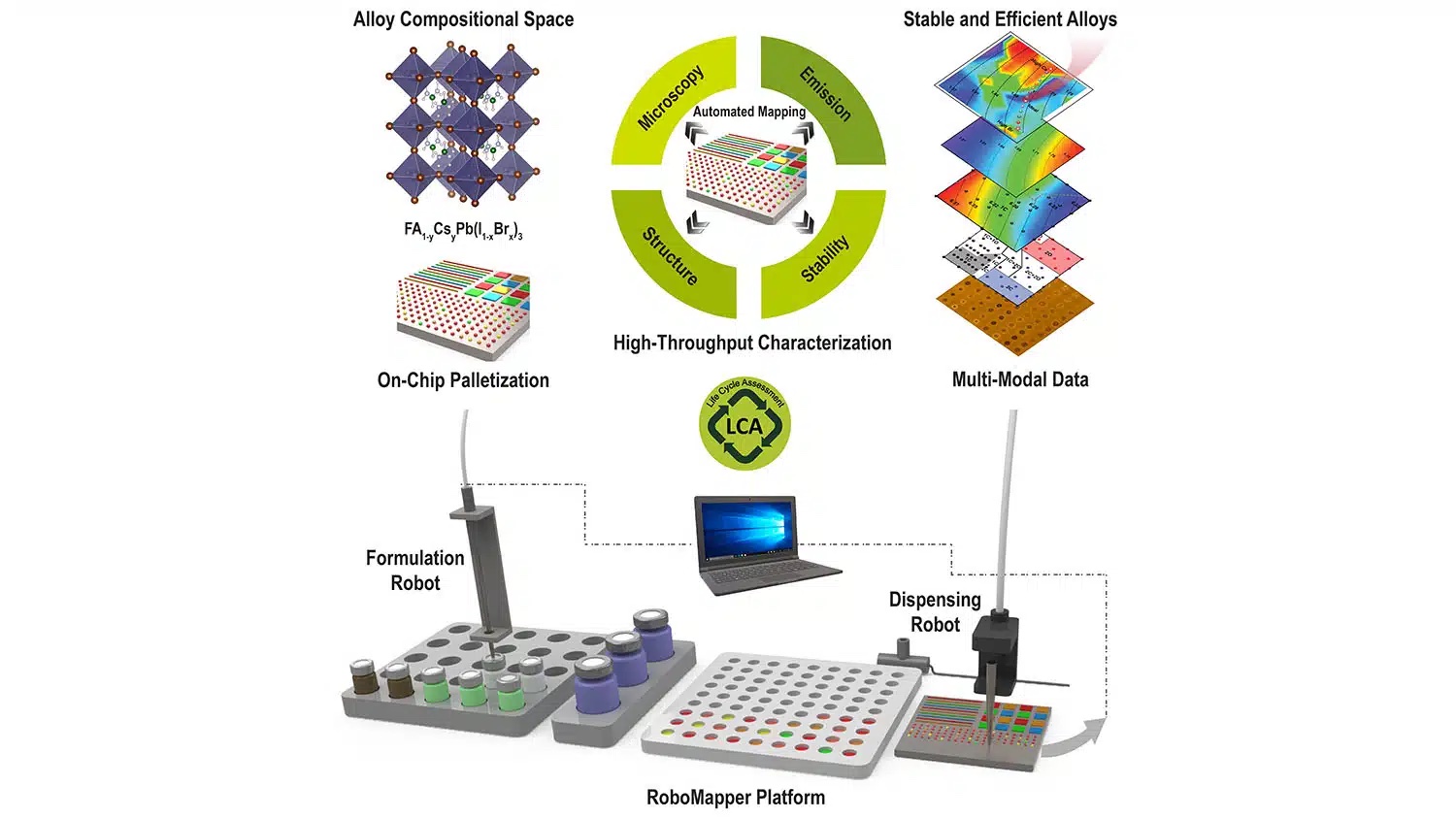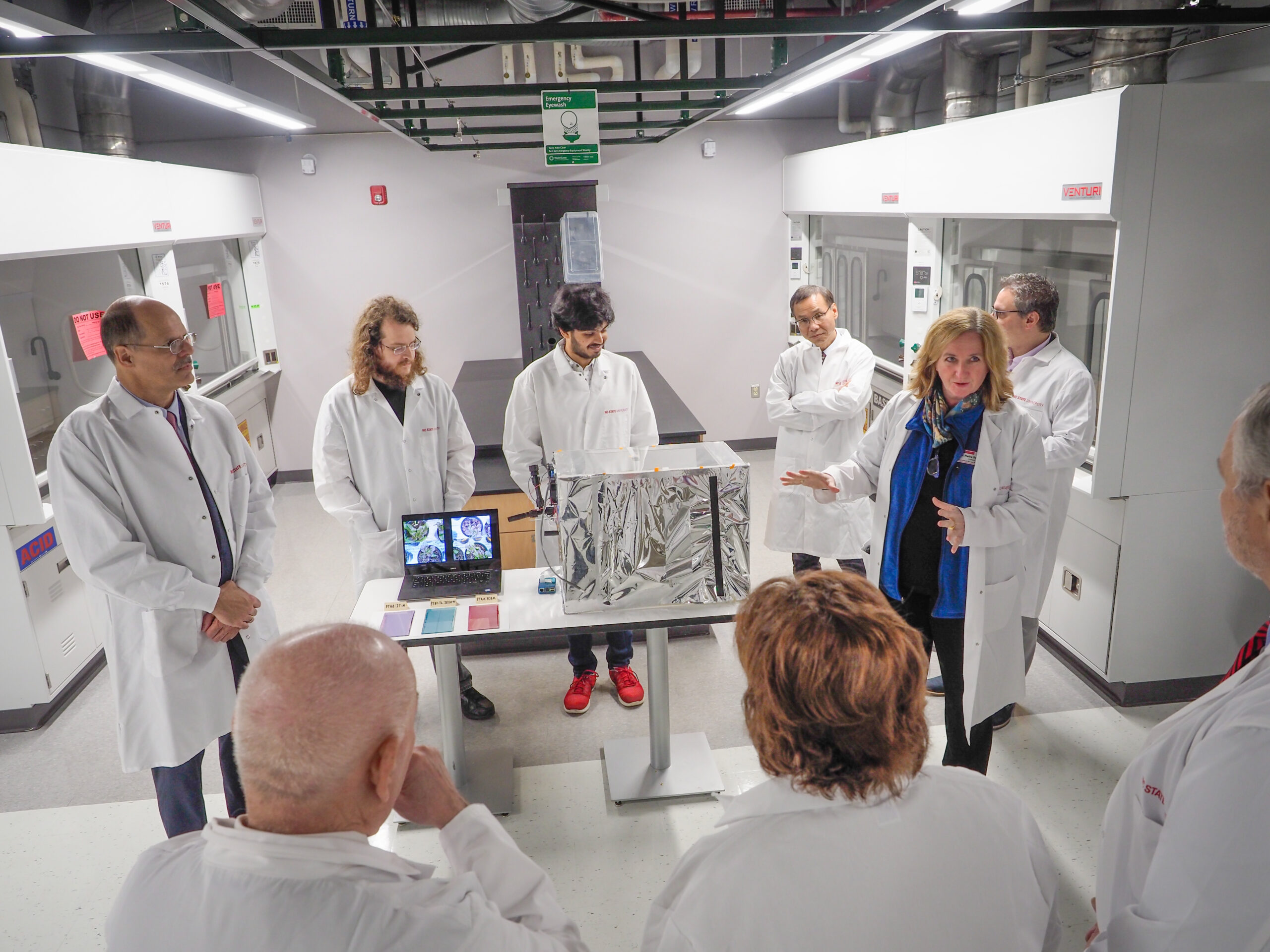ORaCEL Researchers Demonstrate a Highly Directional Light Emission from a Full‐area organic LED
 Franky So research group, in collaboration with researchers from the University of Texas, have developed and demonstrated a new approach for designing photonic devices. The new approach enables to control the direction and polarization of light from thin-film LEDs, paving the way for a new generation of virtual reality (VR) and augmented reality (AR) technologies. Light‐emitting diodes (LEDs) with directional and polarized light emission have many photonic applications, and beam shaping of these devices is fundamentally challenging because they are Lambertian light sources. In this work, using organic and perovskite LEDs for demonstrations, by selectively diffracting the transverse electric (TE) waveguide mode while suppressing other optical modes in a nanostructured LED, the authors first demonstrate highly directional light emission from a full‐area organic LED with a small divergence angle less than 3° and a TE to transverse magnetic (TM) polarization extinction ratio of 13. This story in the journal Advanced Materials.
Franky So research group, in collaboration with researchers from the University of Texas, have developed and demonstrated a new approach for designing photonic devices. The new approach enables to control the direction and polarization of light from thin-film LEDs, paving the way for a new generation of virtual reality (VR) and augmented reality (AR) technologies. Light‐emitting diodes (LEDs) with directional and polarized light emission have many photonic applications, and beam shaping of these devices is fundamentally challenging because they are Lambertian light sources. In this work, using organic and perovskite LEDs for demonstrations, by selectively diffracting the transverse electric (TE) waveguide mode while suppressing other optical modes in a nanostructured LED, the authors first demonstrate highly directional light emission from a full‐area organic LED with a small divergence angle less than 3° and a TE to transverse magnetic (TM) polarization extinction ratio of 13. This story in the journal Advanced Materials.
This news appears in NCSU’s news outlet.


